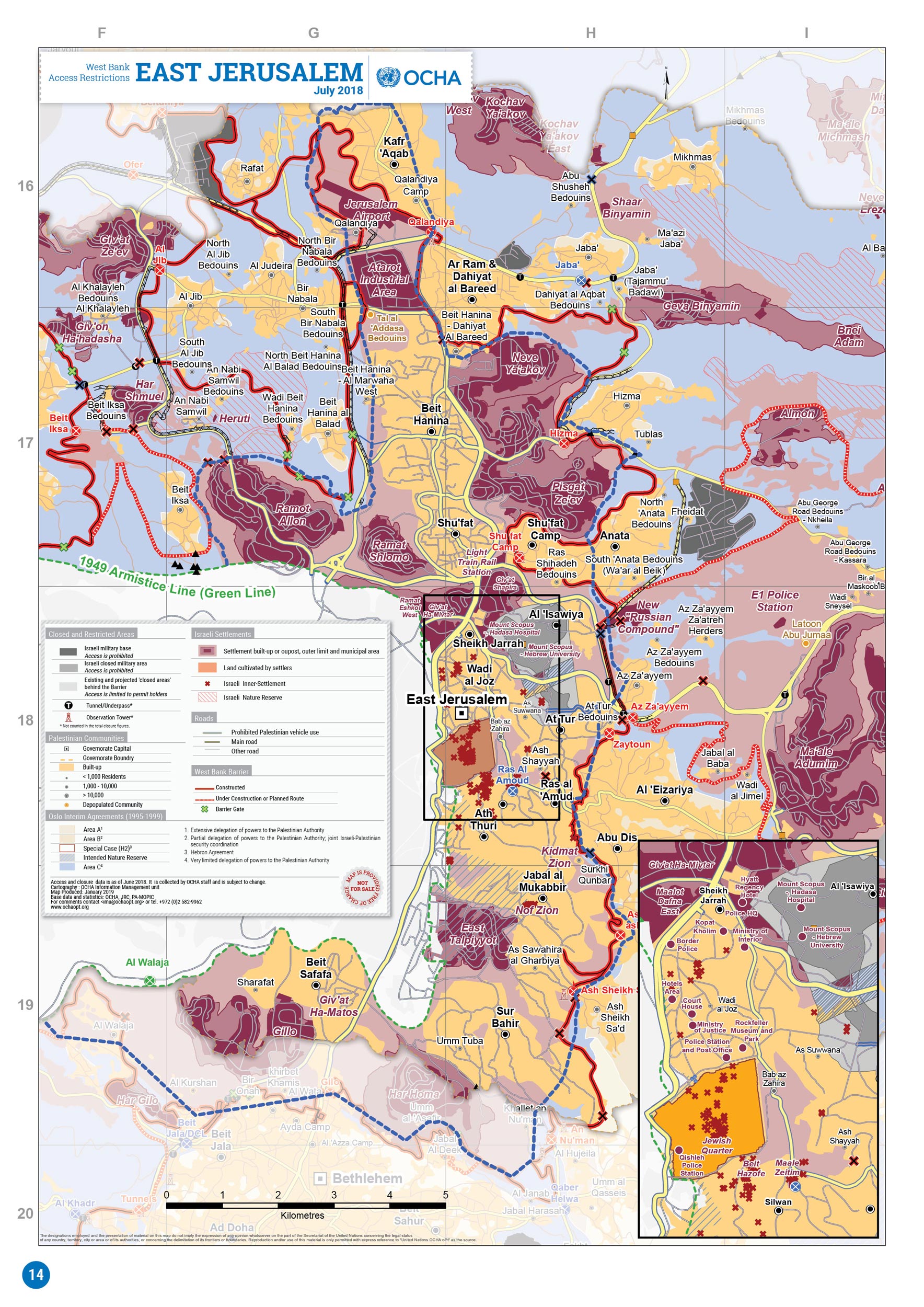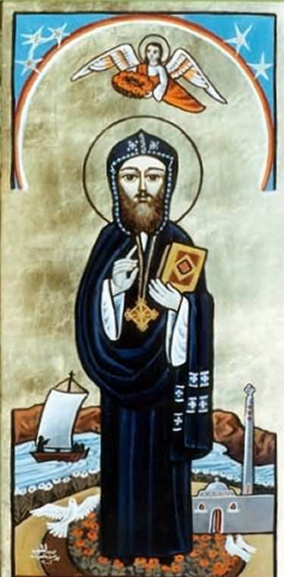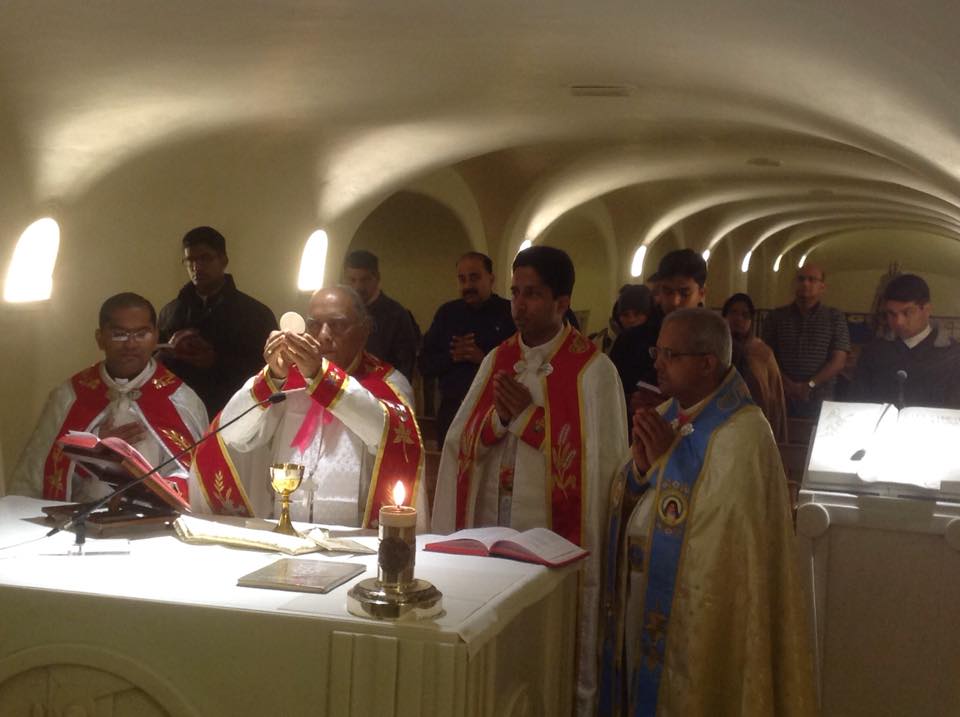|
Monastery Of Saint Mark, Jerusalem
The Syriac Orthodox Monastery of Saint Mark ( syr, ܕܰܝܪܳܐ ܕܡܳܪܝ̱ ܡܰܪܩܽܘܣ ܕܣܽܘܪ̈ܳܝܝܶܐ, romanized: Dayrā dMār Marqus dSūrāyē) is a Syriac Orthodox monastery and church in the Old City of Jerusalem. According to a 6th-century inscription that was found at the Monastery of St Mark's in Jerusalem during a restoration in 1940, the church is supposed to have been built on the ancient site of the house of Mary, mother of St. Mark the Evangelist () and the place of the Last Supper of Christ with His disciples. However, other Christians believe that the Last Supper was held at the nearby Cenacle on Mount Zion. Inscription "This is the house of Mary, mother of John, called Mark. Proclaimed a church by the holy apostles under the name of the Virgin Mary, mother of God, after the ascension of our Lord Jesus Christ into heaven. Renewed after the destruction of Jerusalem by Titus in the year A.D. 73." History There is a large collection of manuscripts writte ... [...More Info...] [...Related Items...] OR: [Wikipedia] [Google] [Baidu] |
East Jerusalem
East Jerusalem (, ; , ) is the sector of Jerusalem that was held by Jordan during the 1948 Arab–Israeli War, as opposed to the western sector of the city, West Jerusalem, which was held by Israel. Jerusalem was envisaged as a separate, international city under the 1947 United Nations partition plan. It was, however, divided by the 1948 war that followed Israel's declaration of independence. As a result of the 1949 Armistice Agreements, the city's western half came under Israeli control, while its eastern half, containing the famed Old City, fell under Jordanian control. Israel occupied East Jerusalem during the 1967 Six-Day War; since then, the entire city has been under Israeli control. The 1980 Jerusalem Law declared unified Jerusalem the capital of Israel, formalizing the effective annexation of East Jerusalem. Palestinians and many in the international community consider East Jerusalem to be the future capital of the State of Palestine. This includes (out of ... [...More Info...] [...Related Items...] OR: [Wikipedia] [Google] [Baidu] |
Severus Of Antioch
Severus the Great of Antioch (Greek: Σεβῆρος; syr, ܣܘܝܪܝܘܣ ܕܐܢܛܝܘܟܝܐ), also known as Severus of Gaza or Crown of Syrians (Syriac: ܬܓܐ ܕܣܘܪܝܥܝܐ; Tagha d'Suryoye; Arabic: تاج السوريين; Taj al-Suriyyun), was the Patriarch of Antioch, and head of the Syriac Orthodox Church, from 512 until his death in 538. He is venerated as a saint in the Oriental Orthodox Church, and his feast day is 8 February. Biography Early life and education Severus was born in the city of Sozopolis in Pisidia in c. 459,Barsoum (2003), p. 92 or c. 465, into an affluent Christian family, however, later Miaphysite sources would assert that his parents were pagan.Witakowski (2004), pp. 115-116 His father was a senator in the city,Chapman (1911) and his paternal grandfather, also named Severus, [...More Info...] [...Related Items...] OR: [Wikipedia] [Google] [Baidu] |
Jacobite Syrian Christian Church
The Jacobite Syrian Christian Church (JSCC), or the Malankara Archdiocese of the Syrian Orthodox Church in India also known as Malankara Jacobite Syrian Orthodox Church, the Jacobite Syrian Church, and the Syriac Orthodox Church in India, is a catholicate based in Kerala, India, of the Syriac Orthodox Church of Antioch and part of the Oriental Orthodox Church. It recognizes the Syriac Orthodox Patriarch of Antioch and All the East as supreme head of the church. It functions autonomously within the church, administered by the Metropolitan Trustee, under the authority of the Maphrian of India, Baselios Thomas I. Following schism with the Malankara Orthodox Syrian Church, is currently the only church in Malankara that is directly under a Syriac Christian Antiochian hierarchy, claiming continuity to the 1665 schism. The church employs the West Syriac Rite Liturgy of Saint James. Name Emperor Justin I supported the Chalcedonians. Severus of Antioch, who was not a Chalcedoni ... [...More Info...] [...Related Items...] OR: [Wikipedia] [Google] [Baidu] |
Holy Qurbana
The Holy Qurbana ( syr, ܩܘܼܪܒܵܢܵܐ ܩܲܕܝܫܵܐ, ''Qurbānā Qaddišā'' in Eastern Syriac or ''Qurbānā Qandišā'' in the Indian variant of Eastern Syriac, the "Holy Offering" or "Holy Sacrifice" in English), refers to the Eucharistic liturgy as celebrated in East Syriac Christianity and the liturgical books containing the rubrics for its celebration. Churches that celebrate this liturgy include various descendants of the Church of the East. East Syriac Christianity consists of an Edessan liturgical rite called the East Syriac Rite (also known as the Edessan Rite, Assyrian Rite, Babylonian Rite, Chaldean Rite or Persian Rite). The major anaphora of the East Syriac tradition is the Holy Qurbana of Saints Addai and Mari; Addai being a disciple of Thomas the Apostle and Mari being Addai's disciple. These churches are primarily based in the Middle East and India, with diasporic communities settled in the western world. The East Syriac Rite is also employed by the ... [...More Info...] [...Related Items...] OR: [Wikipedia] [Google] [Baidu] |
Luke The Evangelist
Luke the Evangelist (Latin: '' Lucas''; grc, Λουκᾶς, '' Loukâs''; he, לוקאס, ''Lūqās''; arc, /ܠܘܩܐ לוקא, ''Lūqā’; Ge'ez: ሉቃስ'') is one of the Four Evangelists—the four traditionally ascribed authors of the canonical gospels. The Early Church Fathers ascribed to him authorship of both the Gospel of Luke and the Acts of the Apostles. Prominent figures in early Christianity such as Jerome and Eusebius later reaffirmed his authorship, although a lack of conclusive evidence as to the identity of the author of the works has led to discussion in scholarly circles, both secular and religious. The New Testament mentions Luke briefly a few times, and the Epistle to the Colossians refers to him as a physician (from Greek for 'one who heals'); thus he is thought to have been both a physician and a disciple of Paul. Since the early years of the faith, Christians have regarded him as a saint. He is believed to have been a martyr, reportedly having bee ... [...More Info...] [...Related Items...] OR: [Wikipedia] [Google] [Baidu] |
Virgin Mary
Mary; arc, ܡܪܝܡ, translit=Mariam; ar, مريم, translit=Maryam; grc, Μαρία, translit=María; la, Maria; cop, Ⲙⲁⲣⲓⲁ, translit=Maria was a first-century Jewish woman of Nazareth, the wife of Joseph and the mother of Jesus. She is a central figure of Christianity, venerated under various titles such as virgin or queen, many of them mentioned in the Litany of Loreto. The Eastern and Oriental Orthodox, Church of the East, Catholic, Anglican, and Lutheran churches believe that Mary, as mother of Jesus, is the Mother of God. Other Protestant views on Mary vary, with some holding her to have considerably lesser status. The New Testament of the Bible provides the earliest documented references to Mary by name, mainly in the canonical Gospels. She is described as a young virgin who was chosen by God to conceive Jesus through the Holy Spirit. After giving birth to Jesus in Bethlehem, she raised him in the city of Nazareth in Galilee, and was in Jerusal ... [...More Info...] [...Related Items...] OR: [Wikipedia] [Google] [Baidu] |
Coptic Orthodox
The Coptic Orthodox Church ( cop, Ϯⲉⲕ̀ⲕⲗⲏⲥⲓⲁ ⲛ̀ⲣⲉⲙⲛ̀ⲭⲏⲙⲓ ⲛ̀ⲟⲣⲑⲟⲇⲟⲝⲟⲥ, translit=Ti.eklyseya en.remenkimi en.orthodoxos, lit=the Egyptian Orthodox Church; ar, الكنيسة القبطية الأرثوذكسية, translit=al-Kanīsa al-Qibṭiyya al-ʾUrṯūḏuksiyya), also known as the Coptic Orthodox Patriarchate of Alexandria, is an Oriental Orthodox Christian church based in Egypt, servicing Africa and the Middle East. The head of the church and the See of Alexandria is the Pope of Alexandria on the Holy Apostolic See of Saint Mark, who also carries the title of Father of fathers, Shepherd of Shepherds, Ecumenical Judge and the thirteenth among the Apostles. The See of Alexandria is titular, and today, the Coptic Pope presides from Saint Mark's Coptic Orthodox Cathedral in the Abbassia District in Cairo. The church follows the Coptic Rite for its liturgy, prayer and devotional patrimony. The church has approximat ... [...More Info...] [...Related Items...] OR: [Wikipedia] [Google] [Baidu] |
Jacob Baradaeus
Jacob Baradaeus (; grc, Ἰάκωβος Βαραδαῖος, label=Ancient Greek, Greek; ar, مار يعقوب البرادعي; syc, ܝܥܩܘܒ ܒܘܪܕܥܝܐ, label=Syriac language, Syriac), also known as Jacob bar Addai or Jacob bar Theophilus, was the Bishopric of Edessa, Bishop of Edessa from 543/544 until his death in 578. He is venerated as a saint in the Oriental Orthodox Churches and his feast day is 31 July.Livingstone (2006) Jacob's missionary efforts helped establish the non-Chalcedonian Syriac Orthodox Church, also known as the "Jacobite" Church after its eponymous leader, and ensured its survival despite persecution. Background Following the Council of Chalcedon in 451, the church in the Eastern Roman Empire suffered division between Chalcedonians, supporters of the council, and non-Chalcedonians, also known as miaphysites and pejoratively called monophysites, who opposed the council. Non-Chalcedonians lost political support at the ascension of Emperor Justin I in ... [...More Info...] [...Related Items...] OR: [Wikipedia] [Google] [Baidu] |
Saint Sylvia Of Aquitaine
Saint Sylvia of Aquitaine was a fourth century pilgrim from Aquitaine. She was the sister of Rufinus, the chief minister of the Byzantine Empire under Theodosius and Arcadius. Palladius' ''Lausiac History'' tells she journeyed in the age of 60, and prided in her ascetic habits. In the late 19th century she was thought the author of a detailed pilgrimage account, which is now attributed to Egeria. Her feast day is celebrated on November 5th and she is the patron saint of pregnant women. She is not to be confused with the mother of Saint Gregory the Great who was also a Catholic Pope, Saint Silvia Silvia, or Sylvia, (c. 515 – c. 592) was the mother of Gregory the Great. She is venerated as a saint by the Catholic Church and Eastern Orthodox Church, which names her a patroness of pregnant women. Life Little biographical information abo .... References 4th-century Christian saints 4th-century Byzantine women {{France-saint-stub ... [...More Info...] [...Related Items...] OR: [Wikipedia] [Google] [Baidu] |
Cyril Of Jerusalem
Cyril of Jerusalem ( el, Κύριλλος Α΄ Ἱεροσολύμων, ''Kýrillos A Ierosolýmon''; la, Cyrillus Hierosolymitanus; 313 386 AD) was a theologian of the early Church. About the end of 350 AD he succeeded Maximus as Bishop of Jerusalem, but was exiled on more than one occasion due to the enmity of Acacius of Caesarea, and the policies of various emperors. Cyril left important writings documenting the instruction of catechumens and the order of the Liturgy in his day. Cyril is venerated as a saint within the Roman Catholic Church, the Eastern Orthodox Church, Oriental Orthodox Church, and the Anglican Communion. In 1883, Cyril was declared a Doctor of the Church by Pope Leo XIII. He is highly respected among Palestinian Christians. Cyril is remembered in the Church of England with a commemoration on 18 March. Life and character Little is known of his life before he became a bishop; the assignment of his birth to the year 315 rests on conjecture. Accordi ... [...More Info...] [...Related Items...] OR: [Wikipedia] [Google] [Baidu] |
Bordeaux Pilgrim
The ''Itinerarium Burdigalense'' ("Bordeaux Itinerary"), also known as the ''Itinerarium Hierosolymitanum'' ("Jerusalem Itinerary"), is the oldest known Christian ''itinerarium''. It was written by the "Pilgrim of Bordeaux", an anonymous pilgrim from the city of Burdigala (now Bordeaux, France) in the Roman province of Gallia Aquitania. It recounts the writer's journey throughout the Roman Empire to the Holy Land in 333 and 334 as he travelled by land through northern Italy and the Danube valley to Constantinople; then through the provinces of Asia and Syria to Jerusalem in the province of Syria-Palaestina; and then back by way of Macedonia, Otranto, Rome, and Milan. Interpretation and analysis According to the ''Catholic Encyclopedia'': Another reader, Jaś Elsner, notes that, a brief twenty-one years after Constantine legalized Christianity, "the Holy Land to which the pilgrim went had to be entirely reinvented in those years, since its main siteancient Jerusalemhad been sa ... [...More Info...] [...Related Items...] OR: [Wikipedia] [Google] [Baidu] |







